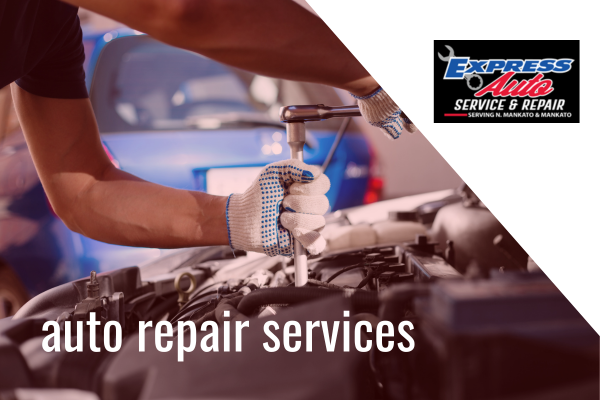All Categories
Featured

2 crucial solutions that are frequently forgotten but have a considerable impact on tire long life and efficiency are tire turning and positioning. Allow's dive into what tire rotation and positioning are and why they're essential for your car.
What Is Tire Turning? Tire rotation is the process of moving your tires from one placement to another to guarantee they use uniformly. Since your vehicle's tires operate at different prices depending upon their placement (front tires versus rear tires), revolving them consistently helps to distribute the wear evenly, leading to a much longer life-span for your tires.
Tires on the front axle tend to wear faster than those on the rear axle, specifically in front-wheel-drive cars and trucks, where the front tires handle both guiding and power. On the various other hand, back tires could put on erratically depending upon the vehicle's weight distribution and driving conditions. By rotating your tires every 6,000 to 8,000 miles (or as advised by the maker), you'll make sure a much more well balanced wear pattern.
What Is Tire Placement? Tire positioning, likewise known as wheel alignment, refers to readjusting the angles of your automobile's wheels to the maker's specifications. Correct placement guarantees that your tires are directing in the best direction, and it assists make the most of tire life and boost vehicle handling. There are 3 major facets of placement: camber, wheel, and toe.
Camber describes the tilt of the tires from the front of the vehicle. If your tires are tilted as well much inward or external, it can create irregular wear. Caster describes the angle of the guiding axis when seen from the side of the auto. This impacts the security of the steering, particularly when driving straight. Toe describes the angle at which the tires point inward or external when viewed from above. This impacts exactly how your lorry tracks when driving. A correct alignment makes certain that all 4 tires are aiming right ahead and are tilted correctly. Imbalance can result from striking pockets, aesthetics, or just from the wear of suspension elements with time.
Why Tire Rotation and Positioning Matter. Extended Tire Life. Both tire turning and alignment assistance stop irregular tire wear. When your tires use equally, they last longer, which can save you cash in the future by decreasing the demand for premature replacements.
Improved Security. Proper tire rotation and placement improve lorry stability and handling. Misaligned tires or erratically used tires can adversely impact your capacity to steer and quit your lorry, especially in emergency situation scenarios. Normal maintenance guarantees your tires do efficiently, supplying a safer driving experience.
Much Better Fuel Efficiency. If your tires are not aligned appropriately, they might drag against the roadway surface area, creating resistance. This added rubbing can lower fuel effectiveness, triggering your lorry to eat even more gas. Normal tire alignment ensures that your lorry moves successfully, improving gas mileage.
Enhanced Comfort. Misalignment or unevenly worn tires can cause a rougher ride, as your vehicle may pull to one side or trigger resonances. By maintaining your tires rotated and aligned, you'll delight in a smoother and much more comfortable driving experience.
Indications That Your Tires Required Turning or Positioning. It's vital to stay sharp for any indications that your tires need rotation or alignment. Keep an eye out for these usual indications:
Unequal Tire Use: If you notice that a person tire is substantially a lot more worn than the others, it might be time for a turning or positioning. Guiding Pull: If your automobile pulls away while driving straight, this might suggest misalignment. Resonances: If you feel vibrations in the guiding wheel or the vehicle itself, maybe an indication of misalignment or unequal tire wear. Squealing Tires: Uncommon tire sound can also indicate incorrect alignment or the demand for a tire turning. Exactly how Commonly Should You Rotate and Align Your Tires? Tire turning must usually be done every 6,000 to 8,000 miles or as defined in your vehicle's proprietor's guidebook. It's a good idea to rotate your tires during every oil adjustment, as this will assist you remain on top of normal maintenance.
As for positioning, it does not call for as constant service. Typically, positioning needs to be examined a minimum of yearly or whenever you notice concerns like pulling away or vibration. You may also need placement if you have actually hit a large pocket or curb, which can throw your wheels out of positioning.
Verdict: Keep Your Tires in Leading Shape. Tire turning and placement are crucial services that keep your car running smoothly, safely, and effectively. By making the effort to have your tires turned and lined up regularly, you're spending in your auto's performance and durability, while additionally improving your security when driving. Stay proactive with tire maintenance, and your car will thank you with much better fuel economic situation, improved handling, and extended tire life.
Latest Posts
Eye Specialists South - Find the Best Eye Doctor Near Me for Comprehensive Eye Care Services.
Vision Center South - Dothan's Choice for Advanced Contact Lenses
Highlighting Longevity and Guarantee
More
Latest Posts
Eye Specialists South - Find the Best Eye Doctor Near Me for Comprehensive Eye Care Services.
Vision Center South - Dothan's Choice for Advanced Contact Lenses
Highlighting Longevity and Guarantee